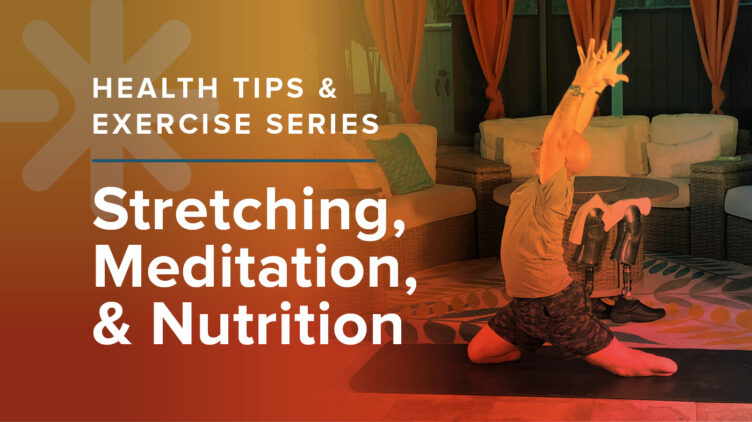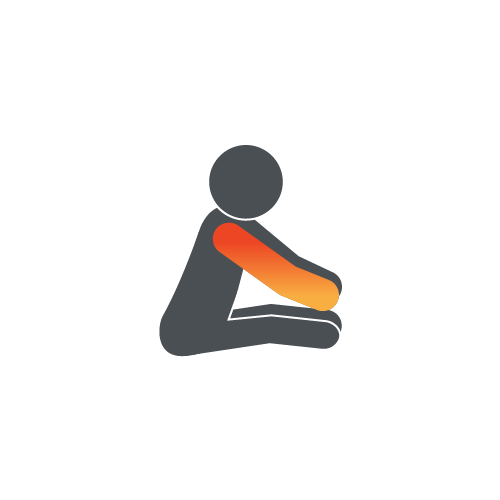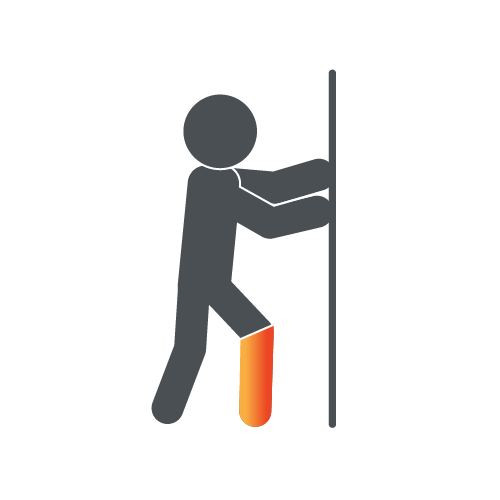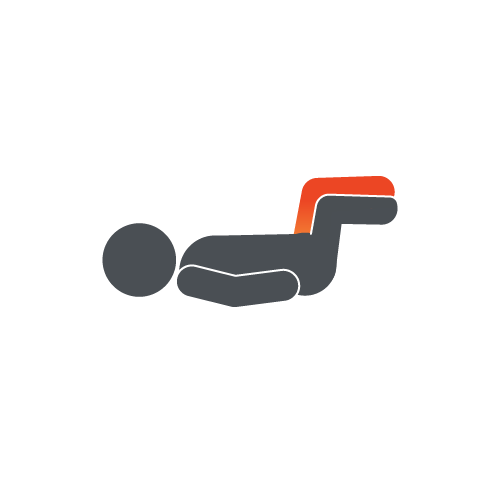Health Tips and Exercise Series – Stretching, Meditation, and Nutrition

We often overlook the effects that stretching, meditation, and nutrition can have on our body and life with orthotic or prosthetic technology. Stretching and meditation help you become more aware of your body and connect you to your physical movement, while nutrition fuels your body and provides energy to support its many functions.
Let’s start by taking a look at meditation and stretching. They actually have a lot in common — both encourage breath and movement throughout our bodies, are effective at controlling stress and anxiety, have been linked to reductions in blood pressure and improved heart health, and achieve the best results when we are present in the moment.
Meditation
Whether it is deep breathing, guided imagery, meditation, prayer, or progressive muscle relaxation, you may find that one or more of these techniques may help your body and mind to relax. Mindfulness-based intervention may help lower the perception of pain, increase mobility, and improve function and well-being. Meditation has a long history of increasing calmness and physical relaxation, improving psychological balance, helping to cope with illness, and enhancing overall health.1 This can positively impact both physical and psychosocial health and may reduce phantom limb pain associated with amputation.
Mindfulness-based intervention can be done on your own or with an instructor. If you are meditating on your own, consider a location that best fits you. It may be a room with a special meditation space, a garden, a place of worship, near a body of water, or outside on your patio or balcony.
Stretching
Stretching helps keep the body flexible, improves range of motion, helps to prevent injury, and makes walking easier and more natural. To benefit most from your stretching, warm up your muscles with some short cardiovascular movement, remember to breathe slowly and deeply, be gentle and do not force the stretch, and be consistent. When holding a stretch, focus on continuing to breath and take deep breaths, not shallow ones. Holding your breath or taking shallow breaths prevents oxygen from reaching your muscles and brain, and raises your blood pressure.2 Combining stretching and breath work or meditation will mentally connect you to your physical movement and make your workout more efficient.
Stretching samples:

Hip Flexor Stretch
Lie flat on your back on the floor, lift one leg, and grab just below the knee or behind the upper leg. Pull it towards your chest. Press the opposite leg into the floor, hold, and return to original position. Switch legs.
If this exercise is difficult, consider a cobra stretch. Lie flat on your stomach on the floor and place your hands flat beneath your shoulders. Tuck your elbows in by your sides and gently raise your head and chest, keeping your hips and groin on the floor and your neck and shoulders relaxed. Hold, return to original position, and repeat.

Hamstring Stretch
Sit on a bed, couch, or bench with your left leg straight, right leg over the side. Hinge at the hips and reach for your left foot. Hold and return to original position. Switch legs.
You may also sit on the floor and extend both legs in the shape of a V. Hinge at the hips and reach for one foot at a time, holding the stretch before moving on to the other side.

Calf Stretch
Stand facing a wall and place your left leg in front of you while extending your right leg back. Focus your weight in your back leg and keep the heel of your back leg on the ground. Put your hands against the wall, lean into the wall, and hold. Switch legs.

Side Stretch
Stand with your feet hip-width apart and clasp your hands above your head. Gently lean your body to one side, feeling a deep stretch along the side of your body. Hold, return to original position, and repeat on the other side.

Back Stretch
Lie with your back flat on the floor and keep your arms out to the side. Raise your feet off the floor to tabletop position. Rotate the pelvis and legs alternately to the right and left. You can also let the pelvis and legs rest for 15-20 seconds on one side and then switch sides. Be sure to keep your legs and buttocks together.
Nutrition
We all know that eating well is good for us. Nutrition can be a powerful ally, helping to fuel you mentally and physically for the challenges of living with a prosthetic or orthotic technology. Make nutrition work for you by focusing on eating real foods that are high in lean protein, healthy fats, fiber, vitamins, and minerals in the right portions. Focus on keeping nutrient rich foods on hand and eating a good variety of food. To make healthy eating easier, plan meals ahead and consider cooking food in batches you can freeze for a quick and easy meal.
At the end of the day, you’re likely to expend more energy using a prosthesis or orthosis, both mentally and physically. Support your functional mobility by including a healthy fitness routine you are able to follow and incorporate into your daily routine. In addition to exercise, consider stretching, mediation, and nutrition. Remember to have some fun and applaud your efforts, great and small.
For more information, take a look at our blogs on Coordination and Balance and Endurance and Strength.
Request a Free Evaluation
If you or someone you love are looking for personalized, high-quality care, get in touch with a board-certified orthotist or prosthetist at a Hanger Clinic near you.
- National Center for Complementary and Integrative Health, Meditation: In Depth
- PennState Extension, Creating Health and Nutrition – Balance, Breathing, and Flexibility
Latest Updates
Subscribe to stay up-to-date on our latest posts.


